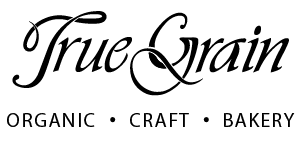
A short history of stollen
Stollen’s most famous city is Dresden, where Christmas stollen has been baked since the 15th century and where every year is held the annual Stollenfest.
On the Saturday before the second advent, a stollen weighing between three and four tonnes is paraded in a carriage through the streets of Dresden to the Striezelmarkt, the oldest Christmas market in the world. One of the bakers then ceremoniously cuts the cake with an enormous metre-long, 12kg silver-plated knife, after which pieces are served to the public by donation to local charities.
Part cake, part fruit bread, stollen is made with a yeast-leavened dough, to which is added candied citrus, rum-soaked raisins, almonds and warming spices such as cardamom and cinnamon. Running through the cake is a core of rich marzipan. When the cake is still warm from the oven, it is brushed lavishly with melted butter and rolled in sugar to seal in the flavour. Ideally the stollen will age at least a few weeks in a cool dark place, to let all the flavours properly mingle. It’s then dusted with icing sugar before being presented in all its glory to be eaten.
We believe a stollen should be served as part of a robust feast, attended by those of stout hearts and minds, and suitably paired with a BC dessert wine.
Like everything baked at True Grain, the stollen are made with organic flour farmed and milled in BC. Other holiday favourites include an array of organic shortbread as well as the ever popular Lebkuchen Gingerbread, the ultimate seasonal cookie to pair with a hot chocolate. Then there are the fruit and nut cakes, the rich fig loaf, and a myriad of tear and share bread centrepieces to adorn your dinner table. A selection of our Christmas favourites are now available to order on our online store.
We’re proud to carry on hundreds of years of handcrafted history in our bakeries, and to share our creations with you.

Leave a comment